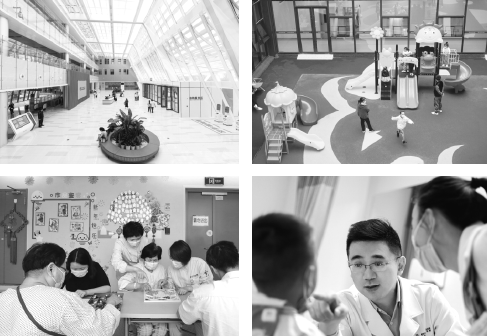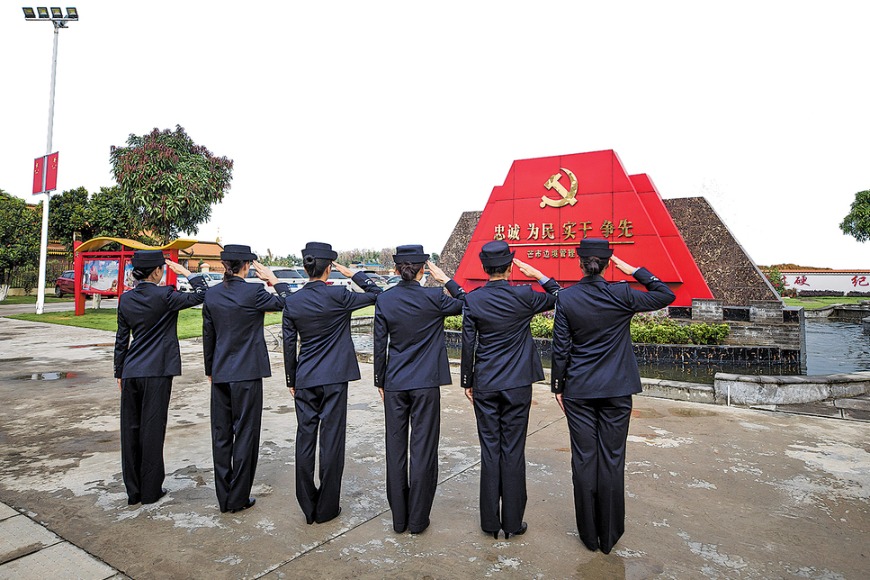Wuhan No 1 Hospital living up to its name with quality of servicesZhao Ruixue

In July, a retired worker surnamed Lyu wrote a letter to Wuhan No 1 Hospital, expressing heart-felt gratitude to 13 doctors working in six different departments at the hospital. In sincerely praising every doctor who had treated him over four years, the elderly patient demonstrated that receiving outstanding service at the facility is the norm.
Wuhan No 1 was established in 1927, making it one of the oldest hospitals in Hubei province. In 2019, adhering to the principle of providing public welfare and patient-centered care by integrating Party-building work with medical services and encouraging Party members and employees to become dedicated medical practitioners, it kicked off an initiative to reinforce its reputation as one of the most caring facilities in all of Hubei.
Public hospitals are the mainstay of China's healthcare service system and the main force of the health and medical frontlines led by the Party. Wuhan No 1 is continuously improving the quality of its services in accordance with patients' suggestions, with the aim of enhancing their sense of satisfaction.
In August 2018, in response to crowded conditions in the dermatology department, the hospital's managers formulated a plan to design a better and more convenient appointment system. By the end of the year, time slots for 15-minute specialist appointments and 30-minute regular appointments were in place, effectively solving the problem of long wait times for the 1.2 million dermatology patients treated annually. Today, precise appointment scheduling covers all departments of the hospital.
The 170 measures
In early 2019, Wuhan No 1 solicited patient feedback on all of its departments, from registration to payment, outpatient services to inpatient wards — even with regard to the cafeteria and restrooms — so as to identify issues needing improvement. By April 2019, 100 service improvement measures had been pinpointed and they started to be introduced that summer, including early-morning and night clinics to facilitate patients getting medical care during cooler hours.
By 2022, the number of service measures was increased to 170, covering everything from optimizing medical service models to redesigning patient care processes and applying new technologies and services to construct a smart hospital.
In the hospital's outpatient hall, there is a demonstration service window for out-of-town patients that provides reception, consultation and guidance services for foreigners. As well, signs like "For the Elderly" and "Elderly Priority" are posted near elevators and designated service windows. The "Benefit-for-People" appointment system allows patients to make one appointment and receive treatment across different specialties, and in another initiative, QR codes are added to the outer packaging of high-risk medications, allowing patients to scan the code and consult pharmacists if required.
The hospital continues to make every effort to provide warm-hearted medical services throughout the entire process, from admission assessment, examination accompaniment, treatment and care to discharge instructions. The 170 service measures have been compiled into pocket-sized books and distributed to every healthcare worker.
Four innovations
"In our hospital, the understanding of warmth goes beyond the traditional to encompass conceptual innovation, technological innovation, service innovation and management innovation," said a hospital spokesperson. "It is not only necessary to have a heartfelt dedication to serving the people, but also to undergo systematic transformation in hospital management to bring about structural upgrades."
The hospital has taken the lead in implementing 14 caring initiatives for elderly patients, becoming one of the first batch of elderly-friendly medical institutions in Hubei province. It has established rehabilitation medical teams that integrate traditional Chinese and Western medicine, and is renowned for facilitating the psychological well-being of prenatal and postnatal care.
In terms of management innovation, Wuhan No 1 simulated the offline patient visitation process in 2020 and adopted a model of assistant-guided diagnosis, video consultation and home delivery of medications through the Wuhan No 1 Hospital Internet Hospital online platform. Over the past three years, this model has provided online diagnosis and treatment services to nearly 800,000 patients.
Setting an example
In its ongoing mission to be a warm-hearted hospital, Wuhan No 1 is staffed by doctors and nurses who excel in both medical skills and ethics. For example, Yang Jiayao, deputy chief of the hospital's department of gastroenterology, was selected as the Wuhan Role Model for the fourth quarter of 2022. As a highly-skilled doctor, Yang's vacant appointment slots are always filled within seconds of being posted online, so he took it upon himself to use his vacation time to see more patients. Also, in an effort to improve the taste of traditional Chinese medicine and ensure its effectiveness, Yang personally sampled hundreds of different combinations of herbal formulations.
Going forward, the hospital said it will continue to adhere to the leadership of the Party in embracing the concept of humanistic service and transform it into daily actions and behaviors of every medical worker, and then integrate it into the hospital's culture.































